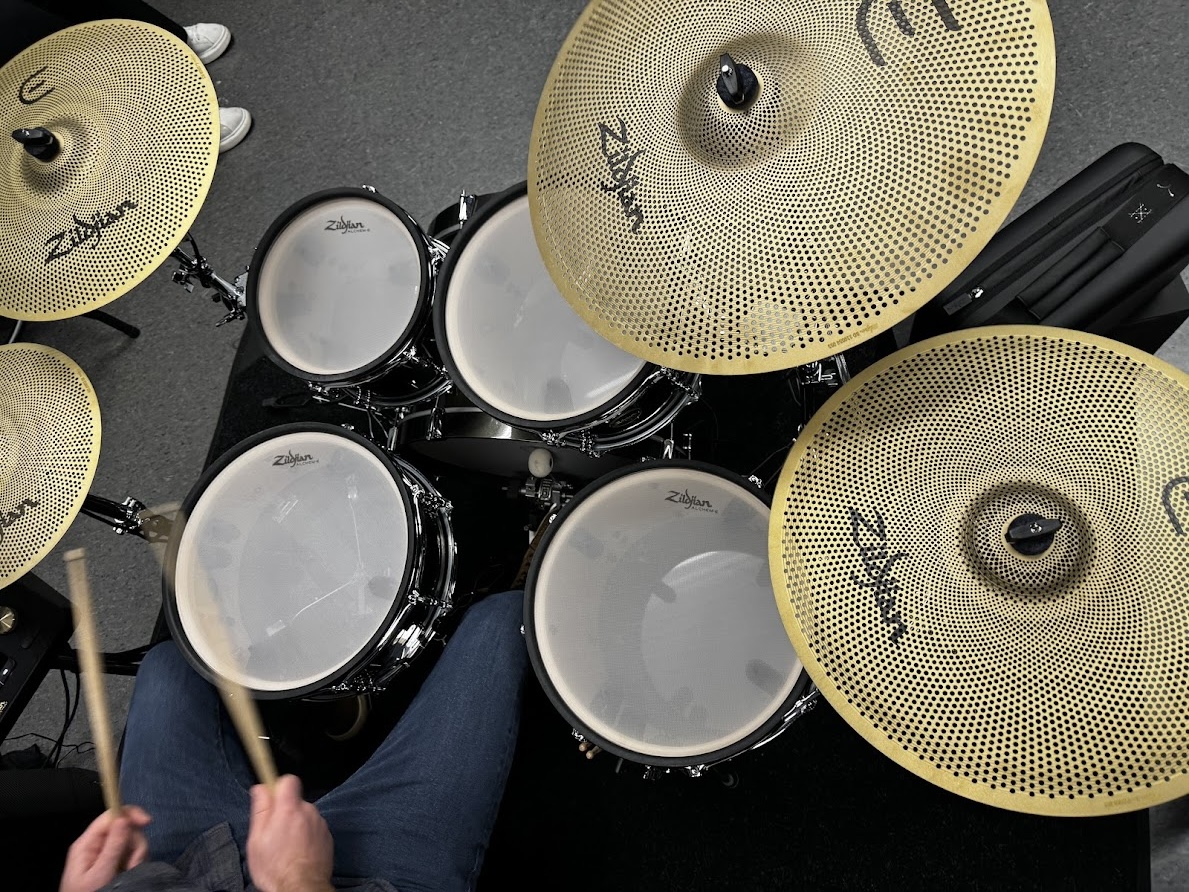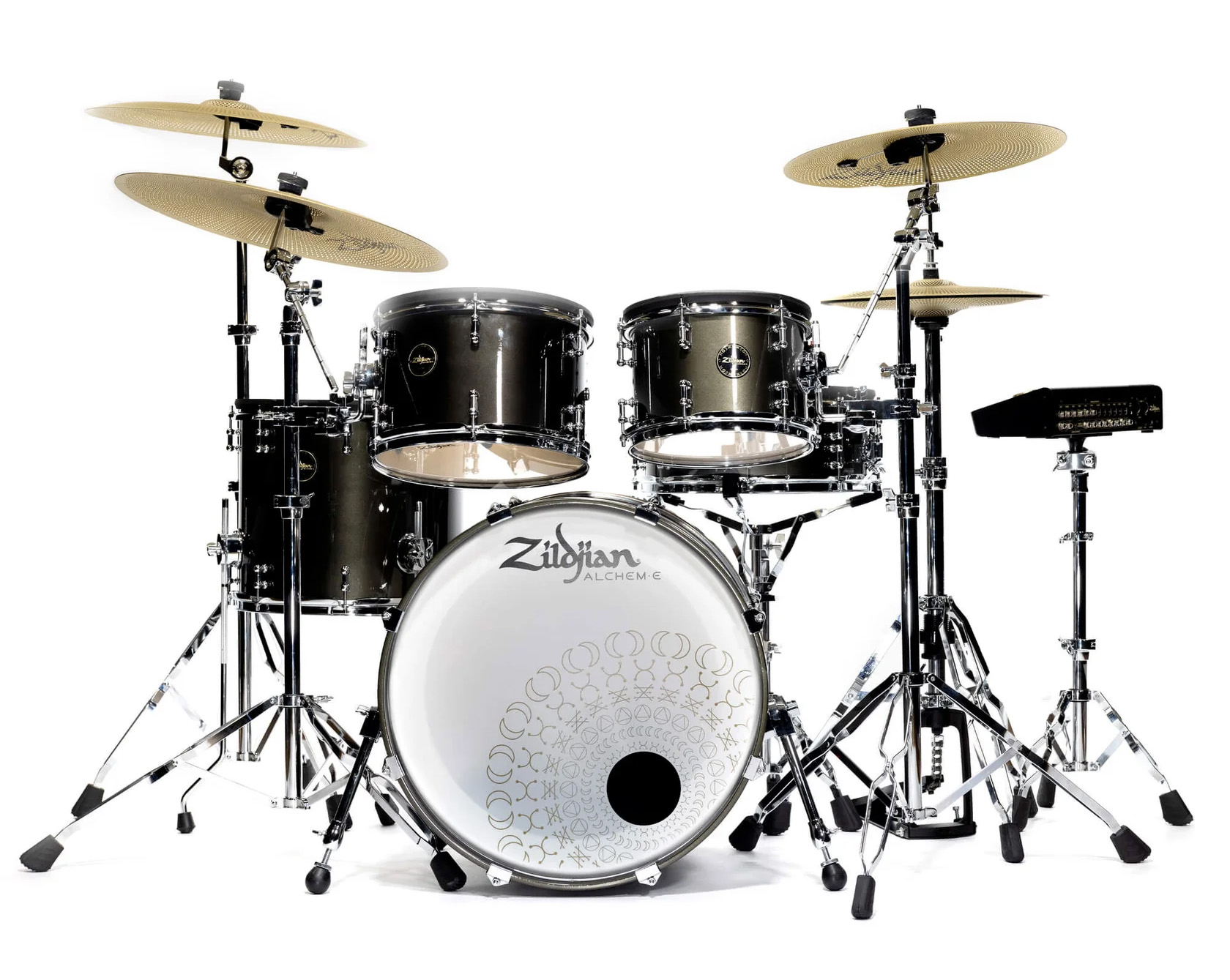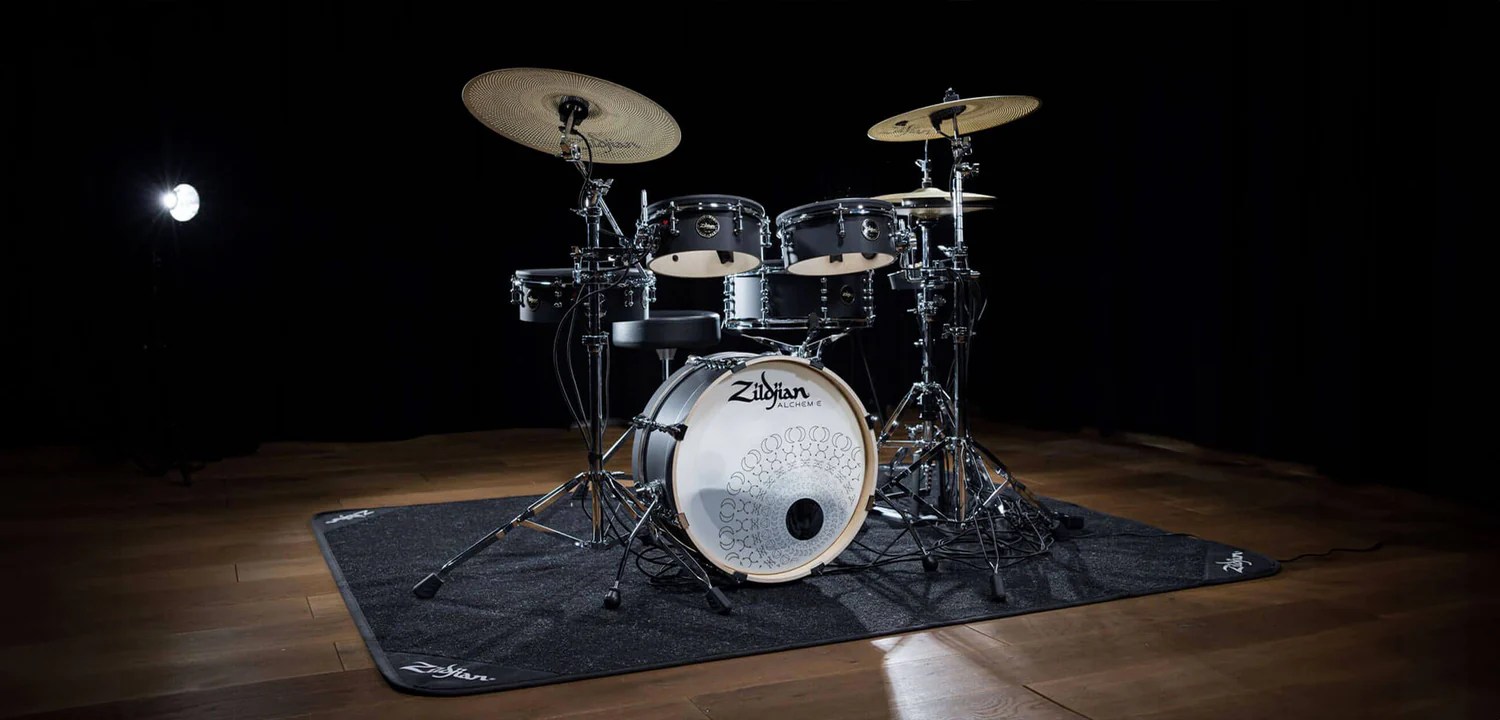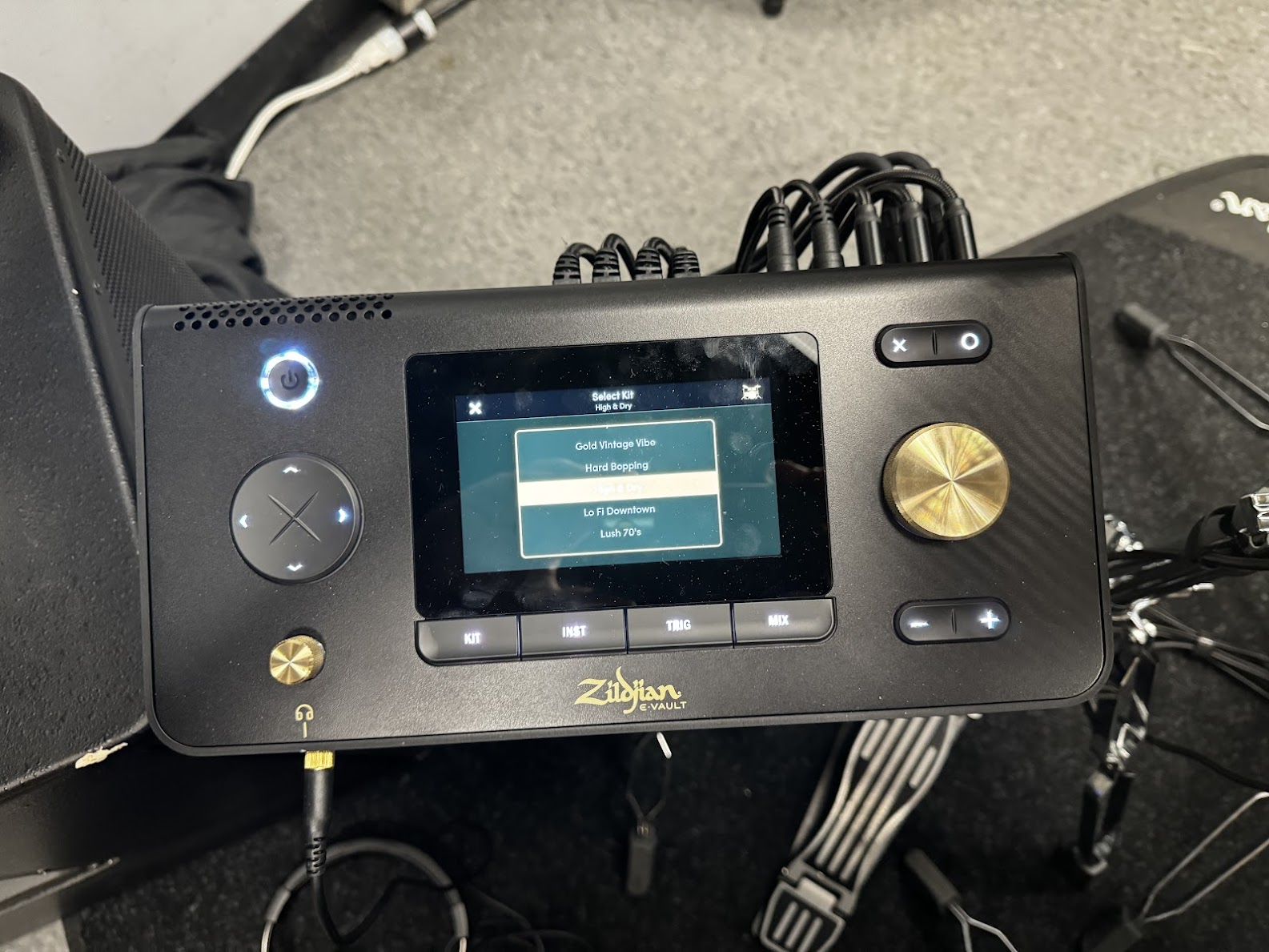Technology
Zildjian’s Alchem-E e-drums solve one of the biggest problems with electronic percussion

We may generate revenue from the products available on this page and participate in affiliate programs. Learn more >
Electronic drum sets have come a long way since the early days of fake-sounding samples and clunky rubber pads. Mesh heads and advanced computer hardware have made e-drums fully suitable for recording and performance. Electronic cymbals, however, are a different story. Fake cymbals typically feel nothing like their traditional metal counterparts, which can really hinder a player’s style. It’s fitting that Zildjian is a company continuously making cymbals since the 17th century— has discovered a solution to the e-cymbal problem and integrated it into its new Alchem-E drum kits.
How do electronic drums work?

E-drums work the same way as most other electronic instruments. For example, an electronic keyboard replaces hammers that strike metal wires with sensors that emit electronic signals when you apply pressure to the keys. Electronic drums typically contain a sensor in a rubber pad or a traditional drum with a special mesh head. A central computing device activates when you press those inputs and translates the action into the desired sound. You hear this through an amplified speaker, or more importantly: they also work with headphones so you can participate in real practice sessions while drastically reducing the noise to the outside world. To an outside observer it simply sounds like a series of clicks and taps rather than crashes and splashes, cracks and thumps.
Zildjian’s Alchem-E drums offer real maple shells (a type of wood typically found in high-end kits) with mesh heads. The sensors inside detect multiple variables to tell how hard you hit and where the stick landed on the head. Hitting the rim and the drum at the same time produces an extra loud rim shot, just like acoustic drums. Behind the kit it all feels very natural. The resilient mesh heads provide rolls and precise changes in dynamics. They feel like very high-quality electronic drums, because that’s what they are. I’m a semi-experienced drummer and the learning curve felt almost non-existent.
What about electronic cymbals?

This is where Zildjian really sets itself apart from other electronic drum makers. The E-Series cymbals feature a series of laser-cut holes, drastically reducing the amount of metal required. This feature reduces the overall sound output of the cymbals by approximately 80 percent, while also shortening the duration of the sound. The company has offered this type of cymbal since 2017 as a lower-volume practice-oriented option, but now it’s fulfilling its electronic potential.
A sensor snaps into holes in the pelvis to create a connection with the electronic brain (which Zildjian calls the E-Vault). Once attached, the sensor can register many different inputs, whether it’s a hard hit on the edge for a crash, a regular hit on the bow or a precise hit on the bell for a defined ping.
These are real cymbals, so the feel is impeccable. You’re applying wood (or in some cases nylon tips) to a real metal alloy, so it’s like playing a normal kit. I was very impressed with the responsiveness, especially in the context of my very sloppy technique. I played everything from tight driving patterns to aggressive crashes and got what I expected every time.
I could spend hours browsing the huge library of cymbals just to see how they sound on different types of hits. An 8-inch capacitive touchscreen allows players to scroll through pre-programmed and customizable kits designed to emulate common musical genres. Want to play hair metal with big, booming toms and a reverb-laden snare drum? There’s a preset for that. Or maybe you want to play a small jazz kit with carefully tuned toms and super dry cymbals. And Zildjian can later update the E-Vault with even more sampled cymbal sounds.
A particularly impressive feature: you can stitch the cymbals just like the real cymbals. If you want a short, sharp crash that won’t resonate over time, you can simply grab it to keep it from resonating. That’s usually a no-no for electronic cymbals, but Zildjian seems to have mastered it. The sampled cymbal sounds come from real models taken from the company’s vault. Choking the cymbal doesn’t just stop the sound; rather, it makes a unique and abrupt sound that a real cymbal makes when you dampen its vibrations. If you need an example, fire away ‘Master of Puppets’ by Metallica as I did during my demo time with this kit.
Okay, so they feel good, but what do they sound like?

All the feeling in the world is worth nothing if it doesn’t make a pleasant sound. Zildjian has gone to great lengths to ensure the output is worth your input. The E-Vault computer records the activity of all sensors and translates it into the kit that suits your style.
Each sound is carefully sampled from real drums and cymbals. The results are extremely convincing. I played through headphones and an amplified speaker and was very impressed in both cases. Once you start messing around with selecting specific cymbals and drum sounds, you can easily spend hours tweaking to dial in your exact preferences.
The E-Vault (shown below) accepts up to six drums and six cymbals at a time, so you can add more inputs later if you want more options. You can add a little special effects cymbal that you would never actually buy in an acoustic version, or you can just assign one of the cymbals to the sound of a dog bark. After all, they are electric.
Play quietly

As previously mentioned, Zildjian’s perforated speakers provide an 80 percent reduction in overall sound output compared to a typical model. It’s hard to convey how impressive the reduction is without hearing it in person. Or not hearing it, in this case. Even when playing with relatively normal technology, the overall sound output to the outside world is still apartment-friendly. You wouldn’t want to be playing in the middle of the night, but it’s generally less disruptive to those around you than watching an action movie on a typical soundbar.
Built-in Bluetooth makes the E-Vault compatible with computers and smartphones, so you can stream your favorite songs or practice songs from an external device and play along. With headphones on it almost feels like you’re playing with a real band.
The Alchem-E kit options
Zildjian designed Alchem-E for professionals or high-end amateurs, so the kits aren’t cheap. All kits come with a single bass drum, hardware, the E-Vault, a snare drum, toms and cymbals. The cheapest model is the $4,500 Bronze EX Kit, including shortened shells without resonant heads for each of the toms. The bass drum is also shallower than a typical option. This is the most portable kit.
The $5,999 Alchem-E Gold kit features full-length maple shells for the toms and bass drum. Because they have resonant heads on the back, you can simply swap the mesh heads for more traditional skins and use them as a standard acoustic drum set. It is a typical four-piece configuration with one rack tom and one floor tom. The cymbal set includes a standard ride, crash and high-hat. The flagship Gold EX lineup costs $6,999 and includes two rack toms in addition to the floor tom. The cymbal kit also gets two crashes, a ride and a top hat.
Yes, these kits are expensive, but they are beautifully made and, at least in my first impressions, perform impressively. Plus, if you opt for the Gold models you’re effectively getting two kits, as a simple head swap can turn them from e-drums to an acoustic set. Plus, no price is too high when it comes to pretending to be Lars from Metallica without annoying all your housemates.













